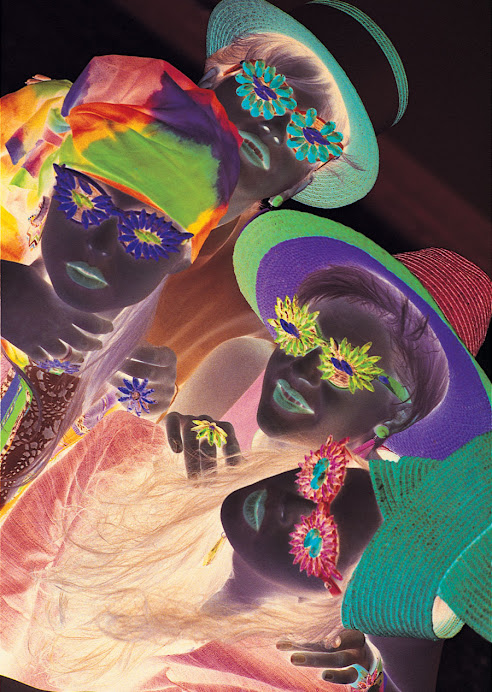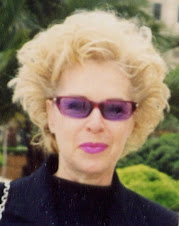 |
| Nurit Bat-Yaar in a 60s "Maskit" poster, seated among hand-woven rugs. |
 |
| Nurit Bat-Yaar in the 60s orange-picking postcard taken by Hana Landes. |
 |
| Nurit Bat-Yaar in a 60s ad for "Ets Ha-zait" |
 |
| Nurit Bat-Yaar as a 60s cover-girl for La-Isha weekly magz. (Anna Landes, photo) |
 |
| Nurit Bat-Yaar modeling for a 60s "Tseva" calander ad. Photo by Berger. |
One day, my father who had a studio in which he and his staff created olive-wood artifacts such as large decorative fruit bowls with the original-natural wood bark around them, desk pen-holders and other souvenirs from the holy-land, asked me if I'd be willing to take a small package of olive-wood buttons somewhere, since his delivery boy didn't show up that day.
Little did I know that he would be sending me to Israel's leading fashion designer, "Maskit"'s Fini Leitersdorf, the creator of unique Israeli style and that the elongated olive-wood buttons were intended for her fabled hand-woven desert coats and duffel coats. Returning home, my parents reported to me that the designer had called them and expressed her wish I would become her model. I recalled those news-reel pre-movies fashion shows I had seen and said "Thanks, but no thanks!" I couldn't picture myself strolling like those aunties, seeing nothing common between them and me.
About 6 months later "Maskit"'s Fini Leitersdorf called my parents again. This time she said she was opening the first "Maskit" modeling course. It would be a very exclusive course taught to girls that only she or Noa Eshkol (daughter of Prime Minister Levi Eshkol) who would teach movement know personally. My mother said: "You don't necessarily have to become a model, but taking the course might contribute to your stature etc." I finally agreed to join with one condition, that I wouldn't be obliged to wear stiletto heels or wear lipstick (in those days I preferred eye make-up with the younger look of natural lips). Fini responded by saying that at "Maskit" you could even model barefoot.
While attending the modeling course, I also studied fashion illustration with Riki Ben-Ari. At the end of the modeling course, there was a press fashion show. "La-isha" weekly magz. wrote about me: "She resembles Brigitte Bardot said the viewers when Nurit passed by them". In "The Jerusalem Post" they wrote: Among the most promising models is the blond girl Nurit". "Haolam Haze" weekly mag. made a very nice "Girl of the week" item about me. In no time, Fini's friend opened a modeling agency and told me I have many photography modeling offers awaiting for me. I gave it a try, and found out it to be more enjoyable than what I had thought, and have decided to give it a go. At the same time I was attending Fini Leitersdorf's studio and serving as her in-house model on whom she created some of her most stunning creations.
At one point, after an orange-picking postcard of mine became a big hit among U.N soldiers stationed in the Gaza strip who received it with their Israeli Foreign Office sent Christmas presents - Eli Tavor of "Haolam Haze" came to interview me about it. After discussing my modeling career as those days' most sought-after photography model - Eli asked me what else interested me. At this point, I showed him my fashion illustrations and was invited to a meeting with the mag. editor-in-chief Uri Avneri who suggested I present him with a trial page about fashion and life-style. I called it "Cherchez La Femme." And the rest is history.




No comments:
Post a Comment